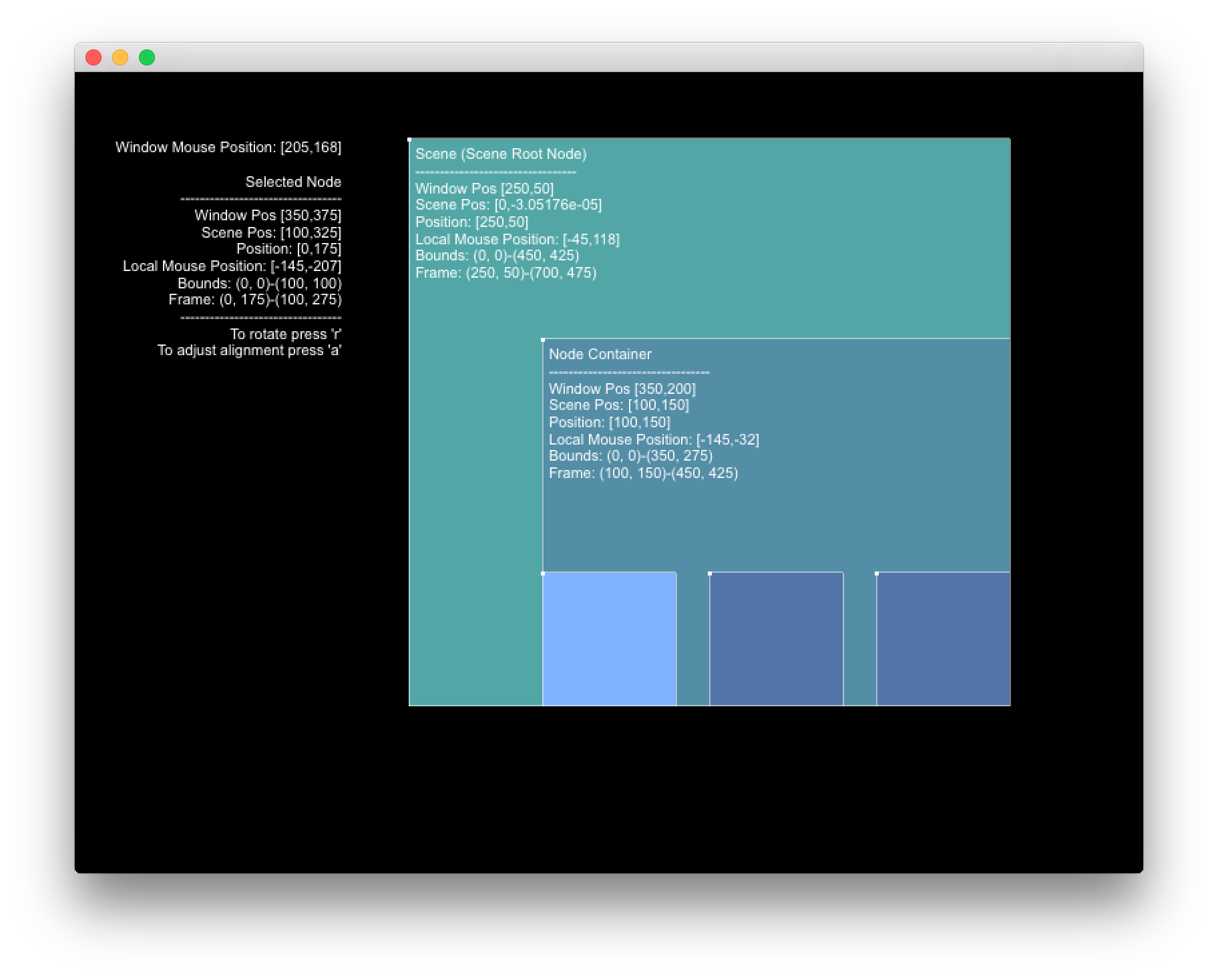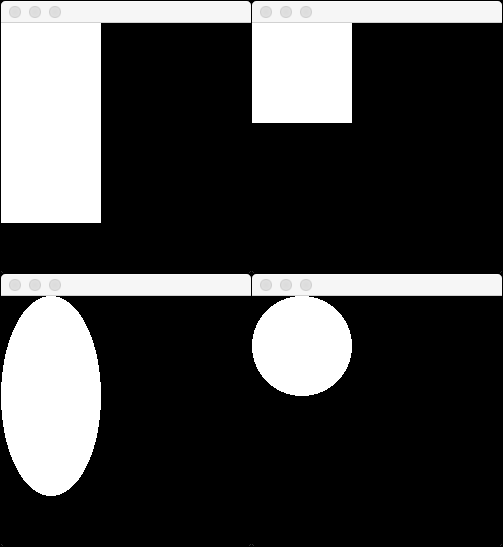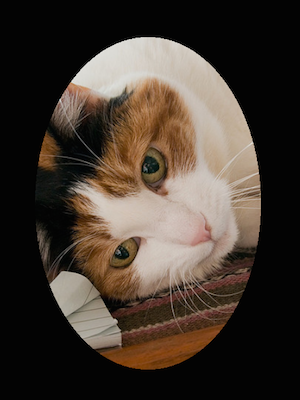po::scene is Potion's 2D Scene Graph block for working with layout, animation and interaction of multiple objects and views within Cinder. It is at its most useful when used with applications that contain a large amount of interactive objects with various states and attributes. po::scene is released under the BSD New License.
The main philosophy behind po::scene is to avoid replacing any of the built-in Cinder functionality at all costs and keep the library as simple as possible.
Some of the key features include:
- Draw tree with automatic update and draw functionality
- Per-node attributes for position, rotation, scale, offset, color, alpha, etc.
- Cinder timeline animation attributes that automatically update node attributes
- Per-node origin points with support for dynamic alignment
- Point-transform from screen space to anywhere in the scene
- Node or group-based Masking
- Full integration with Cinder::Shape2d for custom interactive shapes and texture mapping
- Node containers for leveled grouping of nodes, allowing for group manipulation and hit-testing
- Signal based events with type, source reference and propagation properties
- Simple wrappers for Cinder's built-in Shapes, Textures, TextBoxes, Videos
- Rendering to FBO/Texture for post-processing or caching
- Smart-pointer based syntax with TypeDefs for built-in classes
- Simple inheritance for custom nodes: just define update(),draw() and getBounds()
Wikipedia is probably the best place for a definition that is far more succinct than we can offer.
A scene graph is a collection of nodes in a graph or tree structure. A tree node (in the overall tree structure of the scene graph) may have many children but often only a single parent, with the effect of a parent applied to all its child nodes; an operation performed on a group automatically propagates its effect to all of its members. In many programs, associating a geometrical transformation matrix (see also transformation and matrix) at each group level and concatenating such matrices together is an efficient and natural way to process such operations. A common feature, for instance, is the ability to group related shapes/objects into a compound object that can then be moved, transformed, selected, etc. as easily as a single object.
Using a tree metaphor, po::scene contains three main classes:
po::scene::Sceneis the root system of the tree. It contains the trunk of the tree (the root Node), which in turn contains all branches and leaves.po::scene::NodeContainerrepresents a branch. It can contain any number of other branches, as well as leaves.po::Scene::Noderepresents a leaf, or an end point in the scene-graph. These Nodes are usually the point for any gl drawing.
Diagram of po::Scene structure
Moving any branch of a tree will also move all of its connected branches and leaves. In po::scene moving, scaling, rotating or manipulating a po::scene::NodeContainer will transform all of the child Nodes within it.
 Screenshot from the bounds example, describing the structure of a scene
Screenshot from the bounds example, describing the structure of a scene
Nodes are the basic building blocks of a scene. The po::scene::Node class is a base class that can not be used on its own, but is instead extended by a variety of inheriting classes that make up po::scene.
###Attributes Nodes have a number of built in attributes that relate to how they appear in the scene:
positionThe coordinate of the Node's origin within it's parent or the scene. This is where 0,0 will be within the node's own coordinate space.rotationThe rotation of the Node along the z-axis (2d rotation). Expressed in degrees.scaleThe x and y scale of the Node.fillColorThe color that is used for drawing the Node. This color is used differently depending on the type of drawing the Node does. Expressed as a ci::Color.alphaThe transparency of the Node. This is applied through the node tree. For example, if a parent Node has an alpha of 0.5 and the child has an alpha of 1.0, the child will draw at 0.5 alpha. Items with an alpha of 0.0 will not render but they will be considered for events.offsetThe offset, relative to the Node's (0,0) origin, at which the Node's content will be drawn.alignmentBuilt-in enums used to set the Node's offset automatically, relative to its bounds. For example, CENTER_CENTER will set the Node's offset togetBounds().getSize() * - 0.5.
These attributes use setters and getters that allow the Node to internally keep track of things.
using namespace po::scene;
SomeNodeClassRef node = SomeNodeClass::create();
node->setPosition(ci::Vec2f(25.0f, 25.0f)
node->setFillColor(ci::Color(1.0f, 0.0f, 0.0f);
node->setAlpha(0.5f);
node->setRotation(45.0f);
node->setAlignment(Alignment::CENTER_CENTER);
###Chaining All Node attributes should return by reference, allowing for easy chaining when setting several parameters at once. Here is a more convenient way to write the above example:
using namespace po::scene;
SomeNodeClassRef node = SomeNodeClass::create();
node->setPosition(ci::Vec2f(25.0f, 25.0f)
.setFillColor(ci::Color(1.0f, 0.0f, 0.0f)
.setAlpha(0.5f)
.setRotation(45.0f)
.setAlignment(Alignment::CENTER_CENTER);
###Animations All Node attributes have corresponding ci::Anim objects. These animations can be set and they will be automatically applied to the Node's internal attributes.
// Animate a node from 0,0 to 50,50
ci::app::timeline().apply(&node->getPositionAnim(), ci::Vec2f(50.0f, 50.0f), 1.0f);
Setting any Node attributes at any time during an animation will cancel the animation for that attribute.
//Stop animation and retain current position
node->setPosition(node->getPosition());
###Transformations
Every po::scene::Node has its own coordinate space. All po::scene::Node members contain functions for translating back and forth between various coordinate spaces. There are three main spaces:
windowThe origin of the application's window, as used by Cinder for all screen-based events.sceneThe origin and transformation of a Node's Scene (as specified by the Scene's root Node).localThe origin and transformation of the Node.
There are several Node functions that can be used to translate between coordinate spaces:
windowToLocal/localToWindowTranslate from/to window space.sceneToLocal/localToSceneTranslate from/to scene space.nodeToLocal/localToNodeTranslate from one Node's space into another Node's space. Equivalent tonode1->windowToLocal(node2->localToWindow(...)).
###Events
All Nodes can respond to mouse and touch interaction events. These events come through as po::scene::MouseEvent and po::scene::TouchEvent class members.
These events inherit from po::scene::Event, which in turn wraps Cinder's built-in ci::app::Event events while adding po::scene specific information.
All po::scene Events have the following information:
ciEventA copy of the raw Cinder Event that this Event wraps.sourceThe Node that is subscribing to the Event.propagationEnabledControls whether or not this Event should continue through the draw tree if it is handled by the source Node.windowPosThe position of the Event in the window space.scenePosThe position of the Event in the source Node's Scene.localPosThe position of the Event within the source Node.
#####Cinder Events
po::scene wraps the following built-in global (window) Cinder Events for convenience and consistency:
- Mouse Down, Mouse Move, Mouse Drag, Mouse Up
- Touch Began, Touch Moved, Touch Ended. Note: Cinder responds with a group of TouchEvents, po::scene responds with individual TouchEvents
These Events will fire on all subscribing Nodes, in the order of the draw tree (bottom-up), regardless of the Node's bounds.
#####Node Events
po::scene adds additional Events that add interactivity to all Nodes. These Events are fired on the top-most Node first, and will only pass through Nodes if the propagationEnabled variable is set to true.
- Mouse Down Inside, Mouse Move Inside, Mouse Drag Inside, Mouse Up Inside
- Touch Began Inside, Touch Moved Inside, Touch Ended Inside
####Subscribing to events
po::scene::Node Events are signal-based, and can be retrieved using the getSignal(SignalType) syntax:
using namespace po::scene;
SomeNodeClassRef node = SomeNodeClass::create();
// Connect node's Mouse Down Inside event to a member function of this class
node->getSignal(MouseEvent::Type::DOWN_INSIDE).connect(std::bind(&ThisClass::mouseHandler, this, std::placeholders::_1);
###Visibility/Interaction
po::scene::Node contains two variables that affect interactivity. The setVisible(bool enabled) method allows the Node to stay in the Node hierarchy, but it will not render and it will not be considered in interaction events. It is a quick way to turn a Node on/off without having to add and remove it.
setInteractionEnabled(bool enabled) sets a Node to be ignored for events, but still render to the screen.
On the other hand, to set a Node to be considered for interactive events but not render to the screen (e.g., to create an invisible hit area), set the Node's alpha to 0.
NodeContainers inherit from the Node class and can contain any number of Nodes or other NodeContainers. These are the branches of the scene, and they allow for hierarchy, grouping, and complex layouts.
Adjusting any attributes of a NodeContainer also affects every Node that it contains.
A NodeContainer's bounds are determined by its child Nodes.
NodeContainer Events are based on all of the container's child Nodes. For example, if a NodeContainer subscribes to the MouseEvent::Type::DOWN_INSIDE event and the mouse is pressed, all of it's child nodes will be checked. If the mouse is down inside any of them, the event will fire.
The po::scene::Scene class represents the main entry point for a scene graph. Any program can contain multiple scene graphs, which will exist entirely independent of each other.
The Scene class requires a root Node, which inherits from po::scene::NodeContainer. This Node represents the beginning of the draw tree, and is the origin for the scene.
To create a Scene, you can either start with an empty (auto-created) root Node
using namespace po::scene;
SceneRef myScene = Scene::create();
You could then add child Nodes to this root Node using the getRootNode() function of po::scene::NodeContainer.
NodeRef myRootNode = MyRootNodeClass::create();
myScene->getRootNode()->addChild(myRootNode);
or (more common) extend po::scene::NodeContainer and provide that as the root Node.
using namespace po::scene;
SceneRef myScene = Scene::create(MyRootNodeClass::create());
The Scene's update() and draw() functions need to be called each frame from Cinder's update() and draw() functions.
void MyCinderApp::update()
{
myScene->update();
}
void MyCinderApp::draw()
{
myScene->draw();
}
This in turn will traverse the node tree, automatically triggering the update() and draw() trees of every visible Node in the scene.
po::scene provides a number of convenient wrappers around Cinder classes that allow users to attach various renderable objects rather than trying to extend these or re-implement these classes. These allow renderable Cinder objects to gain hit-testing, matrix transforms, animations, and everything else provided by the po::scene::Node class.
po::scene::Image provides a simple Node that displays a ci::gl::TextureRef.
po::scene::Shape is a more complex wrapper for both the ci::Shape2d class as well as the ci::gl::TextureRef class.
The first way to use a po::scene::Shape is as a solid-filled shape. po::scene::Shape provides number of convenience methods for this purpose:
using namespace po::scene;
ShapeRef myRect = Shape::createRect(100,200);
ShapeRef mySquare = Shape::createSquare(100);
ShapeRef myEllipse = Shape::createEllipse(100,200);
ShapeRef myCircle = Shape::createCircle(100);

Examples of the above shapes drawn on a 300x300 app window
These create and set the backing ci::Shape2d. This can be replaced at any time by the user.
This shape will be drawn using the po::scene::Node fillColor attribute, and hit-testing will be done using the built in ci::Shape2d contains method.
In addition, a ci::gl::TextureRef can be attached to it to any po::scene::Shape and mapped using a number of alignments.

Texture drawn on an ellipse; see the ShapeTextureSample for changes in alignment and additional shapes
po::scene::Video provides a Node that wraps a Cinder movie player. Because there are numerous Cinder video players, it was created as a generic wrapper. It provides a po::scene::VideoGl type, which uses the Cinder Quicktime player. You can access or change the Cinder movie and texture reference by calling setMovieRef and getMovieRef.
po::scene::VideoGLRef poVideo = po::scene::VideoGl::create();
// create the Cinder movie reference
ci::fs::path moviePath = ci::app::getAssetPath("path_to_movie");
ci::qtime::MovieGlRef movieRef = ci::qtime::MovieGl::create(moviePath);
// access the Cinder movie reference from VideoGL node
poVideo->setMovieRef(movieRef);
poVideo->getMovieRef()->play();
po::scene::TextBox wraps the ci::TextBox class.
You can create a po::scene::TextBox with an preexisting ci::TextBox; alternatively, po::scene::TextBox::create() will return a po::scene::TextBox wrapping a newly created ci::TextBox.
To set the ci::TextBox member of the po::scene::TextBox, call the setCiTextBox method. This automatically renders the Cinder TextBox and creates a new texture reference.
The bounds of a po::scene::TextBox Node are the bounds of that texture or, if no texture has been created, getBounds() returns a new ci::Rectf.
To manipulate the underlying ci::TextBox, call getCiTextBoxCopy().
Custom nodes should be made for anything that needs to draw into the scene graph and be considered for hit-testing/interaction.
To create a Node, extend this class and implement the following methods:
-
update()Called every frame, do any general code updates here before drawing. -
draw()This draws the Node. Override this method and do any OpenGL drawing here. When this method is called all transforms have been applied to the Node (i.e. position, scale, rotation), so everything is relative to the Node's (0,0) origin. -
getBounds()This is necessary for any hit-testing of an object. Return a ci::Rectf with the Top Left and Bottom Right of the content drawn (or a wider area if you'd like to expand the hit area). For example, the po::scene::Image class returns the top left as 0,0 (relative to the Node's origin) and the width and height of the associatedci::gl::TextureRef.ci::Rectf Image::getBounds() { return ci::Rectf(0,0,mTexture->getWidth(),mTexture->getHeight()); }
Custom NodeContainers are often convenient, but they will draw their children automatically and calculate their bounds, so it is not necessary to override any of the above methods.
Potion is an interactive design and development studio based in New York City. Potion was founded in 2005 with the idea of bringing interaction beyond the desktop and into the real world. At the time the tools for doing this type of work were few and far between, and most of our work involved writing many things from scratch. Examples include Vision Systems, custom touchscreens, and numerous OpenGL implementations.
As Potion began to grow, our OpenGL work slowly started to evolve into our internal framework poCode. We executed many projects and improved poCode over the course of nearly 6 years, but supporting the basic infrastructure for a growing number of platforms, library updates and devices soon became a larger task than we could handle.
Around 2010 a number of open-source C++ frameworks had began to emerge that covered a lot of the basic functionality (and beyond) of poCode, and they also began to amass a large base of users. At the same time, the core feature of poCode that we used for every project was the scene graph, and there did not seem to be a clearly superior implementation of this in any other frameworks.
Potion made the decision in 2014 to move to Cinder, and at the same time rewrite our scene graph to work on top of all of the great work that the Cinder team had done (and continue to do). Since then we have planned, written, tested, re-planned, and rewritten our scene graph while using it to complete several large-scale interactive installations.
We now feel ready to release po::scene, a 2D scene graph built on top of Cinder. It is a tool that we find extremely useful, and we're hoping others do as well. It is not right for every project, but we are hopeful that there are enough people out there doing similar work so that it will help save a few people from rewriting scene graphs from scratch for each project. We would love it if others gave it a try and let us know what they think. We're happy to answer any questions (within reason) and respond to pull requests, address bugs, etc.
At the same time, regardless of the amount of people who decide to use it, this is the library that we will use for the foreseeable future for the majority of our installations, so it will be regularly tested, updated, fixed and improved for our own benefit.
We are happy to have access to the wonderful resource that is Cinder, so hopefully we can pay it forward by open sourcing this library.

